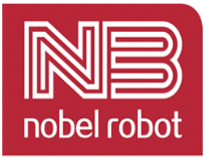The following types of electronic components are generally suitable for Insertion Machines (specifically Through-Hole Technology/THT machines like Axial Inserters, Radial Inserters, and DIP Inserters):
- Axial Lead Components:
- Examples: Resistors, Diodes, Ceramic Capacitors, Inductors, Fuses.
- Characteristics: Leads come straight out from opposite ends of the cylindrical body. Machines bend leads and insert them into two holes in a straight line.
- Radial Lead Components:
- Examples: Electrolytic Capacitors, Tantalum Capacitors, Film Capacitors, LEDs (some types), Varistors, Transistors (TO-92, etc.), Small Relay Coils.
- Characteristics: Leads protrude from the same side (usually the bottom) of the component body. Machines insert both leads simultaneously into two closely-spaced holes.
- Dual In-Line Package (DIP/DIL) Components:
- Examples: DIP ICs (Integrated Circuits), DIP Switches, LED Displays (small), Optoisolators, Relay Sockets.
- Characteristics: Rectangular package with two parallel rows of leads. DIP Inserters pick and place the entire component, inserting all leads simultaneously.
- Single In-Line Package (SIP) Components:
- Examples: SIP Resistor Networks, SIP ICs (less common).
- Characteristics: A single row of leads. Handled similarly to radial components but with more leads in a line.
- Headers & Connectors:
- Examples: Pin Headers (straight/right-angle), Box Headers, Terminal Blocks, Edge Connectors.
- Characteristics: Multi-pin plastic housings with metal contacts/pins. Often require specialized insertion heads or machines due to size and pin count.
- Switches & Relays:
- Examples: Tactile Switches, Toggle Switches, DIP Switches, Small Electromechanical Relays (through-hole variants).
- Characteristics: Typically have multiple radial leads or pins. Compatibility depends heavily on size, weight, and pin configuration.
- Transformers & Larger Inductors:
- Examples: Small power transformers, audio transformers, chokes (specifically designed with THT leads).
- Characteristics: Usually radial leads. Limited by machine weight capacity and lead spacing compatibility.
- Mounting Hardware (Specialized):
- Examples: Standoffs, mounting clips, insulating washers (if designed with insertion-compatible features).
- Characteristics: Requires specialized machine heads and feeders. Not all insertion machines handle these.
Key Factors for Suitability:
- Lead Type & Spacing: Must match the machine’s insertion head capabilities (axial, radial, DIP spacing).
- Packaging: Components must be supplied in machine-friendly packaging:
- Axial: Taped on continuous reels (bandoliers).
- Radial: Sticks (tubes) or Tape & Reel (amnoway packaging).
- DIP/SIP: Sticks (tubes) or Tape & Reel (matrix trays sometimes used).
- Connectors/Switches: Often in trays, tubes, or custom magazines.
- Lead Forming: Axial components usually require pre-formed leads (cut, bent, clinched) by the machine before insertion. Radial/DIP leads are typically straight.
- Component Size & Weight: Must fit within the machine’s physical envelope and be within its weight handling capacity. Very large/heavy parts often require manual placement or specialized machines.
- Lead Strength & Straightness: Leads must be robust enough to survive the insertion process without bending excessively or breaking. They must also be sufficiently straight for the machine to grab them reliably.
The insertion machine produces videos on the whole line
Components Generally NOT Suitable for Standard Insertion Machines:
- Surface Mount Devices (SMDs): Require completely different SMT Pick-and-Place machines and reflow soldering.
- Ball Grid Arrays (BGAs), Quad Flat Packs (QFPs), etc.: Complex SMD packages.
- Components with Very Fine Leads (< 0.5mm): Often too delicate for THT insertion forces; better suited for SMT.
- Extremely Large/Heavy Components: Exceeding machine size/weight limits.
- Components with Irregular Shapes or Fragile Bodies: That cannot withstand the gripping force of the insertion head.
- Components Requiring Specific Orientation During Soldering: If the insertion machine cannot guarantee the required rotational orientation reliably.
In summary: Insertion machines excel at placing traditional through-hole components with defined lead configurations (axial, radial, DIP) that are supplied in standardized, automated packaging. The shift towards SMT has reduced their prevalence, but they remain essential for components requiring high mechanical strength or power handling where through-hole connections are superior.
